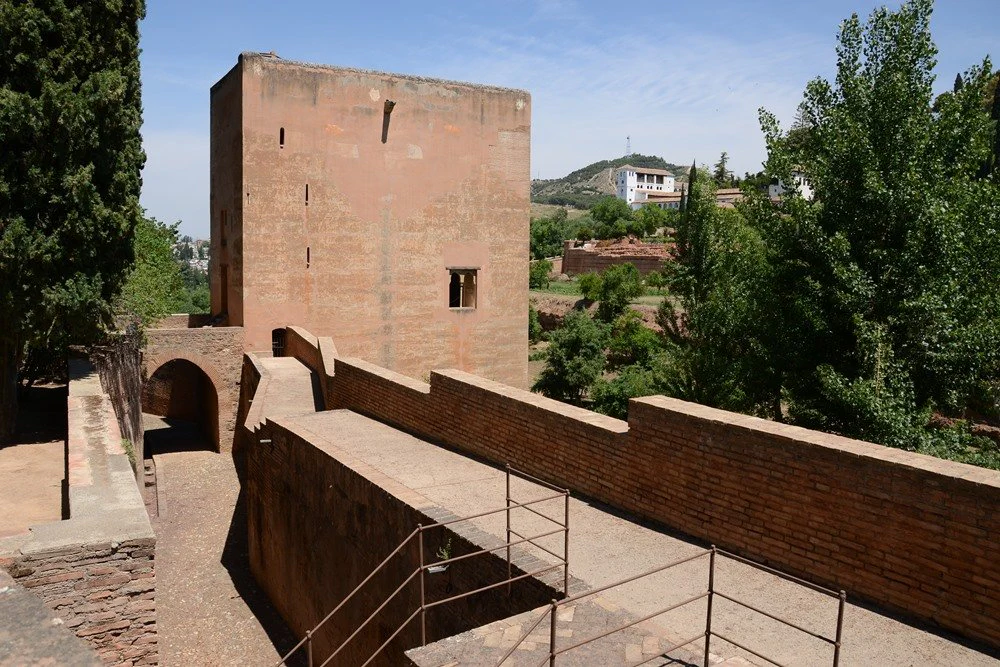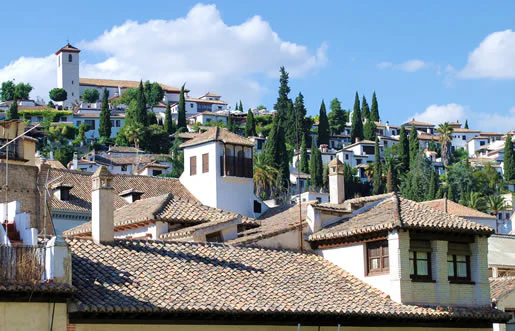Tower of the Captive
The Tower of the Captive (Torre de la Cautiva) is located on the path along the ramparts. During the 16th century it was called Tower of the Woman Thief (Torre de la Ladrona) and Tower of the Sultana (Torre de la Sultana). The name of the tower was changed to Tower of the Captive because it was thought that Lady Isabel de Solís lived there. She converted to the Islam with the name of Zoraya and was Muley Hacén's favourite wife.
It is possible to access the ground floor through a passageway that leads to a patio with galleries open by festooned arches on three of its sides, with imposts of mocarabes. This patio is connected to a square hall through a double arch of mocarabes. This hall's coffered ceiling dates from the 19th century and the dressing rooms have balconies to the exterior. The inscriptions on the wall show its defensive importance for the whole complex and its character of beautiful palace-tower.
It was restored between 1873 and 1876 after it had been used as dwelling of the Christian governors first and of other people later on.
Read more about...



